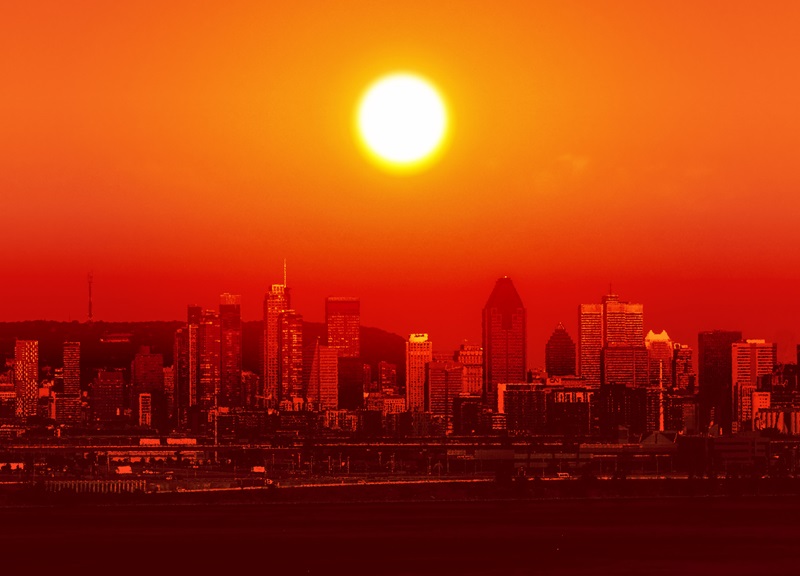What Canada’s P&C industry could pay for NatCats in 2038

If the world misses its targets for limiting global temperatures, Canada’s property and casualty industry could wind up paying 50% more to insure natural catastrophe claims 15 years down the road, Canada’s P&C largest insurer projects.
Doing the math, Canada’s P&C insurance industry paid out $3.1 billion in claims in 2023. A 50% increase over that would have the industry paying out more than $4.6 billion by 2038, if present trends continue.
Charles Brindamour, CEO of Intact Insurance, told CIBC capital market analyst Paul Holden in a “fireside chat” May that the number of natural catastrophes in Canada has increased “by a factor of four” over the past 30 years. Last year, Intact paid out two times what it would expect for Cat claims.
“Now what we’ve done is, we’ve asked ourselves, coming up last summer, ‘What if the world warms up between three to five degrees, as opposed to the two-ish degrees that that the world is shooting for?” Brindamour said. “Our perspective is that the cost of natural disasters over 15 years — that’s the horizon over which we’ve worked — will increase by about 50%.
“And so, our perspective is you can easily price for that, let alone all the [other underwriting] elements we have in the toolbox. The only thing I would point out is that our models show that the unlikely events, so if you go further out the probability curve, they will double. And as such, the cost of capital…should go up a bit to reflect for this additional volatility.
“I do expect that this will continue to lift [home insurance] prices. We’re in a hard market environment in home [insurance]. I think this will continue.”
Over the past decade, home insurance, which is the line of business most exposed to natural disasters, has seen 10 cents paid out in Cat claims for every $1 of premium collected, Brindamour said.
In other news: Auto theft leading to multiple claims, coverage issues
He said this issue will be with society for “a long, long time,” and home property insurance will likely be a future growth opportunity for the P&C industry. “Unfortunately, that being said, for every dollar insured, there are three bucks uninsured, and I think it is a problem that all of society should tackle,” he added.
Society also needs to tackle how to de-risk Canadians from the worst of natural catastrophe risks, according to Brindamour. He observed that Canada’s population growth has driven the country’s economic growth over the past two few years. That’s an opportunity for brokers to provide advice to new immigrants, who need help understanding the Canadian P&C insurance product, he said.
But it also calls into question how the Canadian government plans to manage where communities are built and developed, as Brindamour said.
For example, two days ago, Fort MacMurray, Alta., came within a 40-millimtre rainfall away from once again being torched by a wildfire. The community has already suffered the worst Cat loss in Canadian history in 2016, when Canada’s P&C industry paid out $3.6 billion in wildfire claims. And in 2020, the industry paid out $228 million more for flood claims in the area.
Reinsurers told Canadian Underwriter in 2020 that, although Alberta properties are still insurable, more work needed to be done to build resiliency.
Brindamour added society will also need to tackle the thorny issue of restricting development in high-risk areas exposed to natural catastrophes.
“Ask yourself the bigger question,” he responded to Holden, when asked about the federal government’s proposed flood backstop. “I don’t know if it’s good public policy to encourage people, by making coverage available, to build in floodplains.”
Feature image courtesy of iStock.com/Marc Bruxelle







